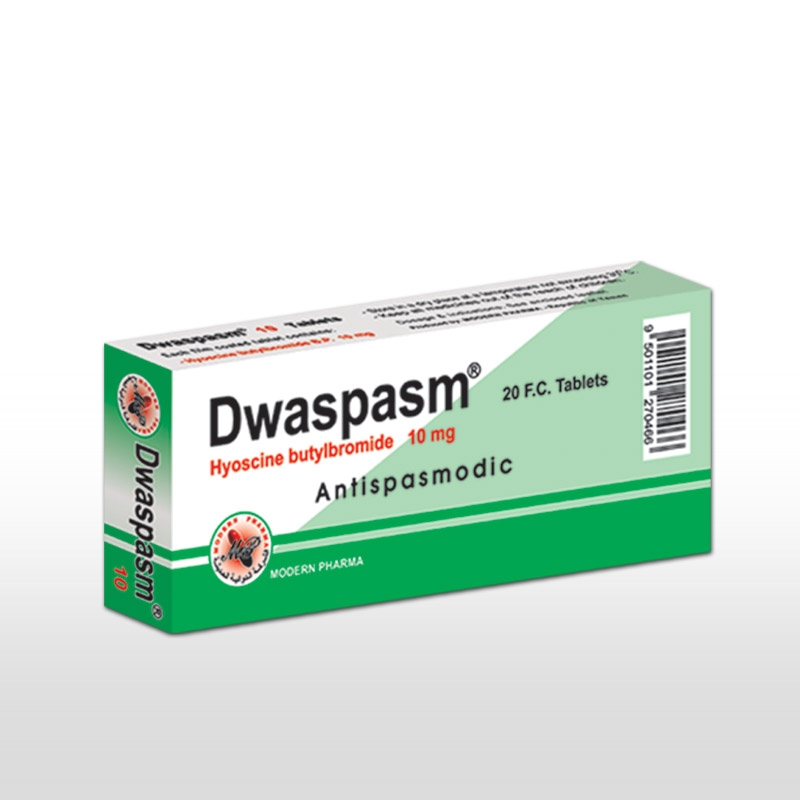Dwaspasm F.C.Tablet
- Hyoscine N butylbromide has a peripheral anticholinergic action
which results from a ganglion-blocking action within the visceral
wall as well as from an anti-muscarinic activity.
Consequently, it exerts a spasmolytic action on the smooth
muscles of the gastrointestinal, biliary and genito-urinary tracts.
- As a quaternary ammonium derivative, Hyoscine N
butyl-bromide does not readily pass the blood-brain barrier;
therefore, anticholinergic side effects at the central nervous
system do not occur when used in therapeutic doses


